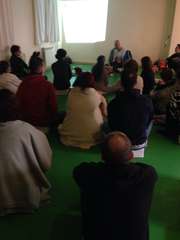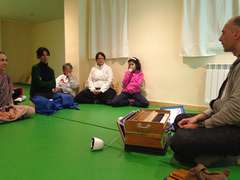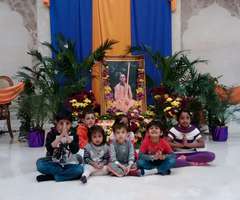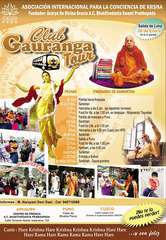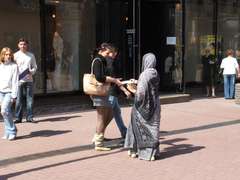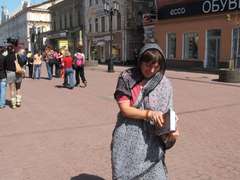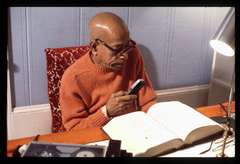Todas las glorias a Sri Sri Guru y Gauranga !!!
Todas las glorias Srila Prabhupada y a su sankirtana eterno!!!
Hare Krsna querido gurudeva, porfavor reciba mis más sinceras y respetuosas reverencias.
HpS - ASA - Oink! Whoop! Whoop.. Pfanrh... !
Despúes de haber tenido días intensos con Ud. en Cusco Mandir, pude entender muchas cosas, Ud. siempre se está preocupando por nuestro avance espiritual, deseo mejorar como devota cada día y no quiero cometer las mismas ofensas, para ello me refugiaré siempre en los pies del señor Caitanya y Nityananda para poder portarme bieny cantar con más entusiasmo mis rondas y poder realizar las instrucciones que nos dió en Cusco con inteligencia.
Ahora estamos de sankirtana viajero, yo soy muy feliz cuando camino por las calles y me encuentro con cada persona, es como si entre la multitud buscará al señor caitanya!!!, en este viaje estamos apoyando a los programas de predica de M. Narayani d.d. (BBS) que consiste en; harinamas, food for life y sankirtana de libros, por las ciudades de arequipa, cusco y puno y bolivia, previa coordinación con los centros de prédica y templos de cada ciudad, cada vez más se unen a este tour de sankirtana entre ellos; m. narayani(BBS), m. namacintamani(Devanmrta S.), m. Amparo (aspirante a Ud.), M. Karina (JPS), P. rupa, p. gadai y yo.
HpS - Hare Krsna!!!
Gurudeva el sadhana y las rondas han mejorado, ahora terminamos nuestras rondas temprano y podemos sentir cada vez más que el mantra vibra en nuestra estúpida mente,la asociación con los devotos es muy intenso, muchos amigos hemos encontrado en este viaje, como ud. dice es muy glorioso ser sankirtanero pero más glorioso es ayudar a los sankirtaneros, recibimos mucho apoyo, con el hospedaje, el prasadam y sobre todo en los kirtanas al bailar tenemos amigas para compartir momentos de felicidad.
Mi corazón siempre tratará de meditar en ti gurudeva, deseo siempre ser su discípula y complacer a Srila Prabhupada y a Ud. apesar de mis limitaciones físicas y mentales como mujer, no hay mayor felicidad en mí si yo puedo sentirme útil dando a otros lo que Srila Prabhupada y Ud me estan dando.
S.S. Nadiya Nivasi Dasi
PROGRAMA DE SANKIRTANA
HpS - ASA - Hare Krsna... Hare Rama!!! Espero es un nuevo era para ISKCON Peru, va a ser conocido en todos partes de Peru como un elemento esencial de la desarolla del pais.
Despues de mucho hielo, y recuperacion de energia, estamos bien. siento tambien como abajo control de Krsna! Esforzando mucho adelantar las programas con Jung y el Bhagavata. Si todo pasa bien podemos volver en Augosto para una programa de dos semanas en la biblioteca nacional.
Apegando fotos de una Sankirtanera en Russia durante nuestra visita 2008...
Reverencias a todos!!!!!

